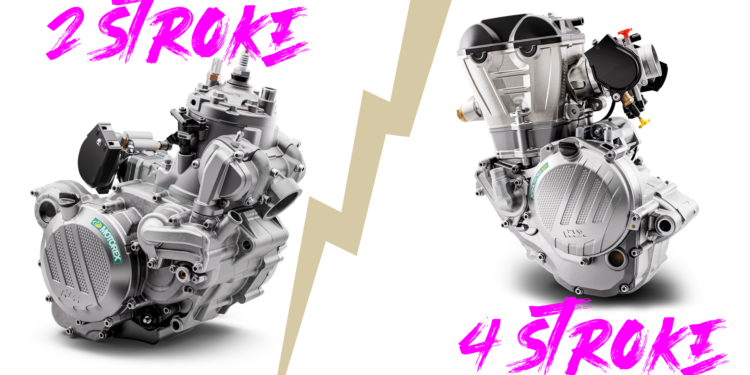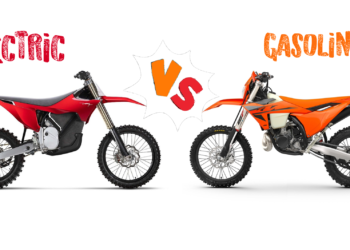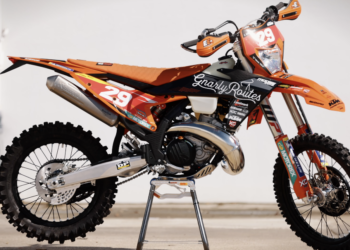Enduro riding involves navigating rugged, off-road terrain at high speeds, so it’s important to have a motorcycle that is well-suited to the task. One key decision that enduro riders must make is whether to choose a 2 stroke or a 4 stroke engine. Here is a breakdown of the main differences between these two types of engines:

2 Stroke Engines:
- 2 stroke engines are lighter and more compact than 4 stroke engines, which makes them well-suited for use in small, agile motorcycles like enduro bikes.
- 2 stroke engines produce more power per unit of displacement than 4 stroke engines, which means they can deliver more power in a smaller, lighter package. This can be an advantage in off-road riding, where a lightweight, nimble motorcycle is often preferred, just like hard enduro!
- 2 stroke engines require a mixture of gasoline and oil to be mixed and poured into the fuel tank, as the oil is used to lubricate the engine. (except KTM TPi, Husqvarna TEi and some of Beta Motor Racing models ) This can be a bit more of a hassle than using a separate oil system, but it also means that you don’t have to carry around a separate oil container.
- 2 stroke engines are generally considered to be less fuel efficient than 4 stroke engines, which means they may require more frequent refueling on long rides. Especially if your ride 300cc 😂
- 2 stroke engines produce more pollution than 4 stroke engines, which has led to stricter emissions regulations in some areas.

4 Stroke Engines:
- 4 stroke engines are generally more reliable and longer-lasting than 2 stroke engines, which can be an advantage for riders who plan on doing a lot of miles or who need a motorcycle they can rely on in the long term.
- 4 stroke engines are generally more fuel efficient than 2 stroke engines, which means they can go longer between fuel stops on long rides.
- 4 stroke engines produce fewer emissions than 2 stroke engines, which makes them more environmentally friendly.
- 4 stroke engines are typically more complex and require more maintenance than 2 stroke engines, which can be a drawback for some riders.
- 4 stroke engines are generally heavier and less agile than 2 stroke engines, which can be a drawback in off-road riding where a lightweight, nimble motorcycle is often preferred.
Ultimately, the decision between a 2 stroke and a 4 stroke engine will come down to the individual rider’s needs and preferences. 2 stroke engines offer a powerful, lightweight option that is well-suited for off-road riding, while 4 stroke engines offer more reliability and fuel efficiency at the cost of some additional weight and complexity. Both options have their pros and cons, and the best choice will depend on the specific needs and goals of the rider.
- Definition of 2 stroke engines:
- Explanation of how they work: intake, compression, power, and exhaust strokes all happen in one revolution of the crankshaft
- Advantages: lighter weight, simpler design, more power per cc
- Disadvantages: more emissions, shorter lifespan, more frequent maintenance required
- Definition of 4 stroke engines:
- Explanation of how they work: separate intake, compression, power, and exhaust strokes happen in two revolutions of the crankshaft
- Advantages: lower emissions, longer lifespan, less maintenance required
- Disadvantages: heavier weight, more complex design, less power per cc








